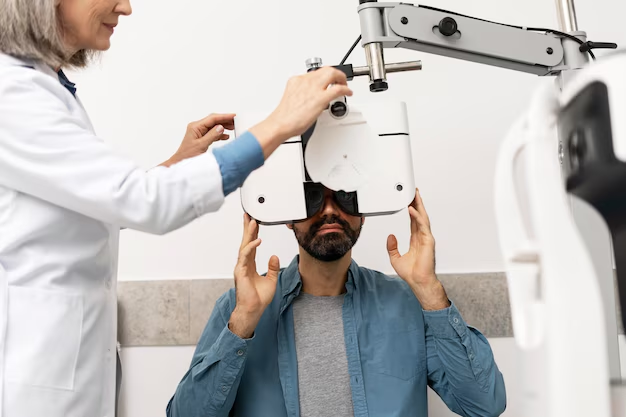Do Cataracts Cause Eye Floaters? Understanding the Connection
Imagine you're trying to read a book or enjoy a scenic view, but every time you move your eyes, you see shapes or strands that seem to float across your vision. These are known as eye floaters, a common visual phenomenon experienced by many. At the same time, a significant number of individuals suffer from cataracts, a clouding of the eye's lens that leads to blurry vision. But how are these two conditions related, and can cataracts actually cause floaters? This article delves into these questions, offering a comprehensive look at how cataracts and floaters intersect.
Understanding Cataracts
What Are Cataracts?
Cataracts occur when the lens of the eye becomes cloudy, leading to decreased vision and the appearance of halos or glare. This condition typically develops with age, affecting a large portion of the elderly population. Cataracts can diminish the sharpness and clarity of one's vision, making daily tasks more challenging.
Causes and Symptoms
While aging is the most frequent cause of cataracts, other factors include:
- Genetics
- Diabetes
- Prolonged exposure to UV radiation
- Smoking
- Certain medications, such as corticosteroids
Symptoms include blurred vision, difficulty seeing at night, sensitivity to light, and seeing "halos" around lights.
Exploring Eye Floaters
What Are Floaters?
Floaters are small dark shapes that appear to drift through your field of vision. They come in various forms, such as spots, threads, or cobweb-like shapes. Floaters are especially noticeable when looking at a bright, plain background like a clear sky or white wall.
Why Do They Occur?
Eye floaters usually result from changes in the vitreous, the gel-like substance inside the eye. As people age, the vitreous becomes more liquid, potentially causing tiny fibers within it to clump together and cast shadows on the retina.
Common causes of floaters include:
- Aging vitreous: The natural, age-related change in the eye's composition.
- Eye injury: Trauma to the eye can introduce temporary or permanent floaters.
- Posterior vitreous detachment: Occurs when the vitreous gel shrinks and separates from the retina.
- Inflammation: Conditions like uveitis can lead to inflammatory debris, resulting in floaters.
The Connection Between Cataracts and Floaters
Do Cataracts Directly Cause Floaters?
While cataracts themselves do not directly cause eye floaters, the conditions often coexist, particularly in older individuals. The changes in the eye that lead to cataracts can also make one more susceptible to experiencing floaters.
Indirect Relationships
Surgical Procedures: Cataract surgery, which replaces the cloudy lens with an artificial one, can sometimes lead to the development of floaters afterward. This usually occurs because the surgery changes the eye's internal environment, possibly destabilizing the vitreous.
Visual Contrast: Cataracts reduce vision clarity, which might lower the contrast with which floaters are seen. Upon cataract removal, the improved visual clarity can make existing floaters more noticeable.
Addressing Floaters in Cataract Patients
Should Floaters Be a Concern?
Eye floaters are typically harmless and a normal part of the aging process. However, a sudden increase in floaters, flashes of light, or a shadow over the vision can indicate a retinal detachment, a condition that requires immediate medical attention.
Managing Floater Symptoms
For those who find floaters troublesome, several approaches might help, although it's important to note these do not eliminate them:
Eye Movements: Moving the eyes up and down swiftly can cause the vitreous fluid to shift, temporarily displacing the floaters out of central vision.
Lighting Conditions: Adjusting your environment's lighting can help reduce visual discomfort. Bright or high-contrast lighting may worsen the appearance of floaters, so softer, diffuse lighting might mitigate their impact.
Medical Interventions: In persistent, severe cases, procedures like vitrectomy can remove floaters, although the risks often outweigh the benefits for typical cases.
Cataract Surgery and Floaters
What to Expect After Cataract Surgery
As mentioned earlier, cataract surgery can sometimes lead to the perception of floaters due to changes in the eye. However, the clarity gained from the surgery might make pre-existing floaters more apparent rather than creating new ones.
Preparing for Surgery
Before undergoing cataract surgery, discuss potential post-operative symptoms with your ophthalmologist, including the possible presence of floaters. Understanding the full range of surgical outcomes will prepare you better and set realistic expectations.
Practical Tips and Takeaways
Here's a quick visual summary of some valuable tips related to cataracts and floaters:
| Tips | Emoji |
|---|---|
| Remember that floaters are often normal, but watch for sudden changes. | 🔍 |
| Cataracts and floaters can coexist but don't cause each other directly. | 👀 |
| Post-cataract surgery floaters are possible; discuss them with your ophthalmologist. | 💬 |
| Use eye movements and lighting adjustments to manage floater visibility. | 💡 |
| Seek immediate care if you experience flashes or a shadow over your vision. | 🚨 |
Floaters can be a common, often harmless experience, while cataracts represent a significant vision health concern—as long as they are diagnosed and monitored appropriately.
By understanding these conditions and their interactions, individuals can make informed decisions about their eye health. Regular check-ups with an eye care professional are vital, as they can offer personalized advice and early intervention options, ensuring that your vision remains as clear and unclouded as possible for years to come.
